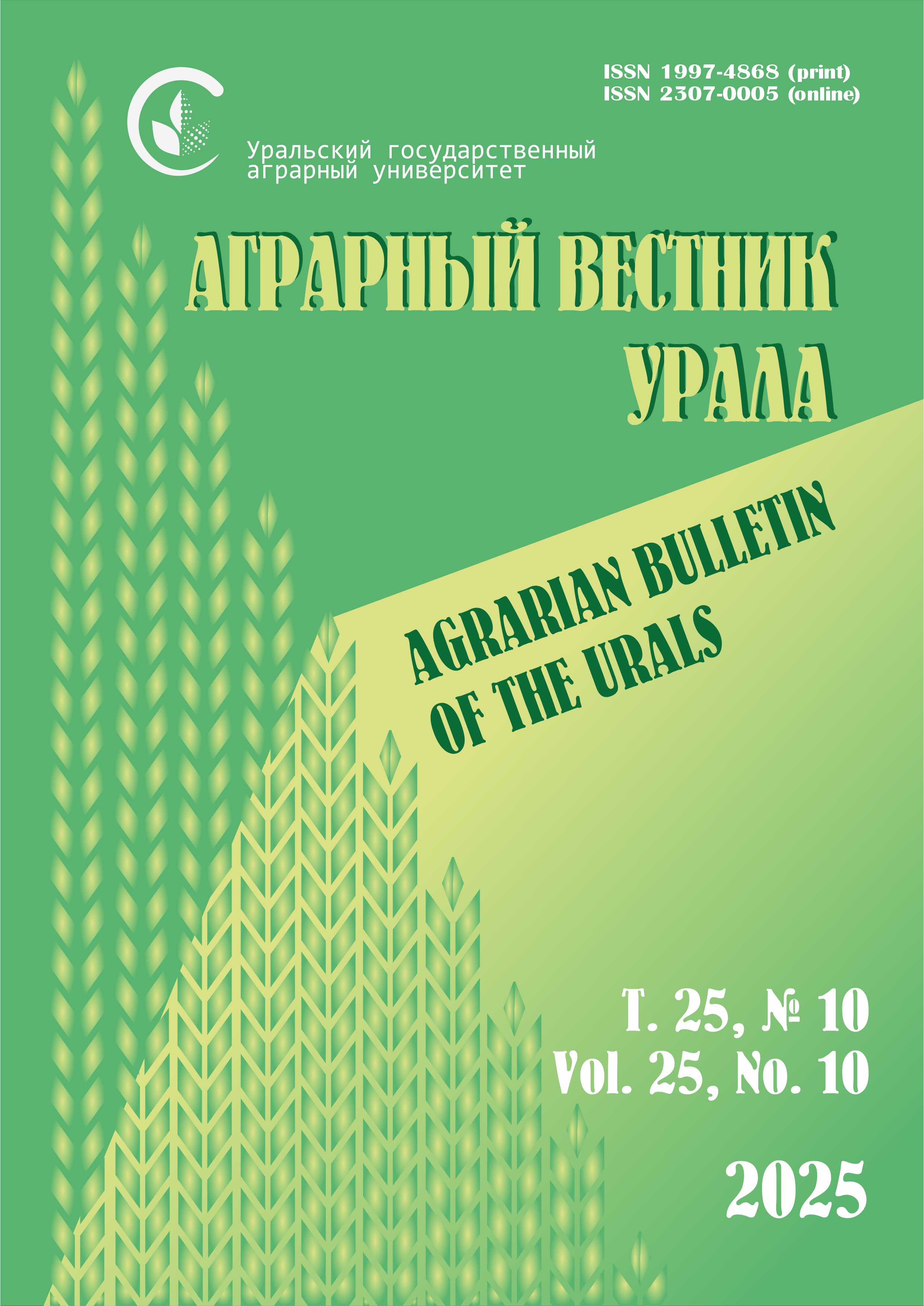V. Yu. Skorokhodov, N. A. Maksyutov, N. A. Zenkova, E. N. Skorokhodova
Federal Scientific Center for Biological Systems and agricultural technologies of the Russian Academy of Sciences, Orenburg, Russian
E-mail: This email address is being protected from spambots. You need JavaScript enabled to view it.
Volume 25 No. 9
Date of paper submission: 13.05.2025, date of review: 10.06.2025, date of acceptance: 14.07.2025.
Published: 09/30/2025
Abstract. The purpose is to determine the impact of crop rotations with different compositions of field crops and rotation times on weed vegetation of the durum wheat agrocenosis on the chernozems of the southern steppe zone of the Southern Urals. Methods. The studies were conducted at the stationary experimental plot of the Department of Agriculture and Resource-Saving Technologies of the Federal State Budgetary Scientific Institution Federal Scientific Center of Botanical Gardening of the Russian Academy of Sciences during 2023–2024. The experiment is included in the register of the Geographic network of experiments with fertilizers and other agrochemicals (Certificate of long-term experiment No. 172). The data were processed according to the methods of B. A. Dospekhov. The object of the study was agrophytocenoses with spring durum wheat. Results. The total number of weeds in the variant of cultivation of durum wheat after black fallow was 44.7 pcs. per 1 m2 , after soil-protecting fallow – 6.5 pcs., after green manure – 19.5 pcs., after winter crops – 42.2 pcs. The number of weeds in durum wheat crops with the use of mineral fertilizers in the experiment with six-field crop rotations was as a result of black fallow –- 72.5 pcs., after soil-protecting fallow – 7.5 pcs., after green manure – 27.5 pcs., after winter crops – 48.0 pcs. The durum wheat crops cultivated in two-field system are most infested with perennial weeds compared to the background without the use of mineral fertilizers. Scientific novelty. In this way, the effect of predecessors in twofield and permanent crops on the density of weeds in agrocenoses of spring durum wheat in the conditions of the steppe zone of the Southern Urals is noted. The use of mineral fertilizers in crop rotations in the conditions of the steppe zone of the Southern Urals contributes to an increase in weed infestation of spring durum wheat crops on a fertilized nutrition background.
Keywords: weed infestation, durum wheat, crop rotation, predecessors, mineral fertilizers, continuous sowing
Acknowledgements. The study was carried out in accordance with the research plan for 2025–2030 of the Federal State Budgetary Scientific Institution “Federal Scientific Center for Biological Systems and agricultural technologies of the Russian Academy of Sciences” (FNWZ-2022-0014).
For citation: Skorokhodov V. Yu., Maksyutov N. A., Zenkova N. A., Skorokhodova E. N. Biological method of controlling the contamination of spring durum wheat crops in the steppe zone of the southern Urals. Agrarian Bulletin of the Urals. 2025; 25 (09): 1329‒1339. https://doi.org/10.32417/1997-4868-2025-25-09-1329-1339 (In Russ.)
Download the full text of the article












